Thuja in a pot: planting and care at home
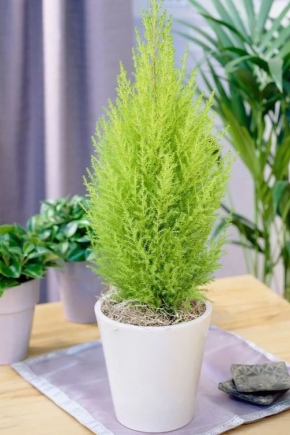
Many people like the pine forest and the smell of pine needles. Trees of such species grow in open ground and reach impressive sizes in height, so it is very difficult to imagine them in your apartment. Over the past decade, an ornamental coniferous plant belonging to the cypress family has appeared on plots in country houses, as well as on balconies. This article will focus on the room thuja, which has become in demand for its unpretentiousness in growing, wonderful smell and beautiful appearance.
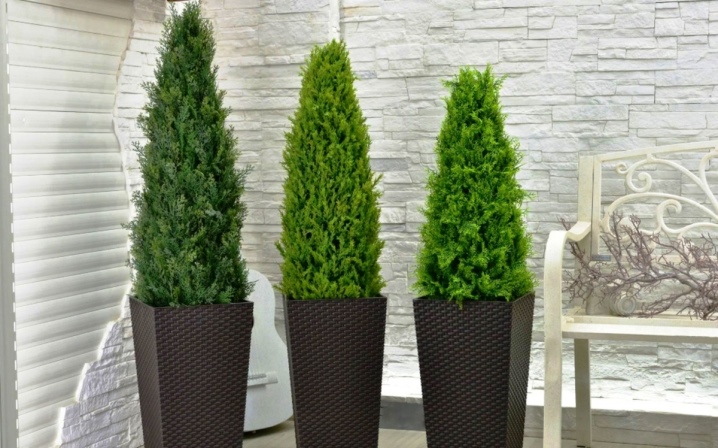
Description
"Iron tree" - this is how they call it in its homeland - in North America. In the wild, it grows in the form of a bush or tree, rising up to 2 meters in height. To date, breeders have bred more than a hundred different varieties of ornamental shrubs and dwarf thuja trees. They became decorations for large loggias, took their place among the landscape plantings in country estates. Evergreen thuja with tiled, stacked small leaves, has oblong, bent down cones under them. Their size is 10 mm. Cones appear with the arrival of autumn. The branches of the plant are light green at a young age, and later acquire a brownish tone.
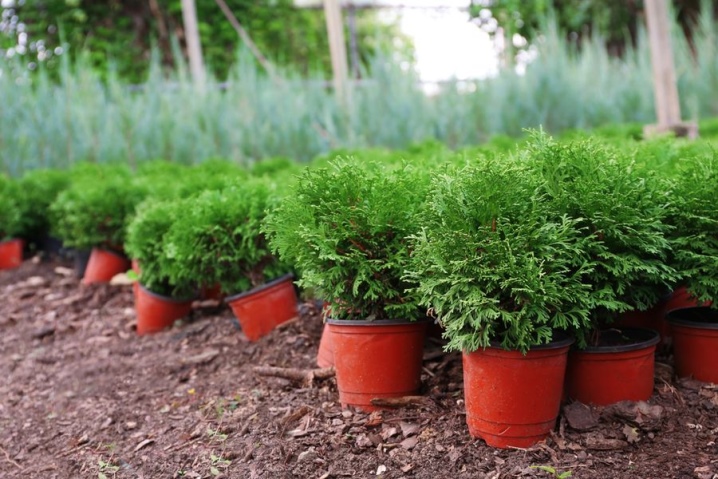
Indoor thuja secretes essential oils in large quantities. They not only contribute to the fact that a very pleasant aroma comes from the shrub, but also have a kind of filtering effect. The air in the room where it grows is purified, any pathogenic bacteria die. You can grow thuja at home in a pot or flowerpot on the balcony, it develops well and grows indoors like an ordinary indoor flower. In order for the cultivation to become effective, you do not need much effort, it is enough to keep the plant in a favorable microclimate, to properly care for it.
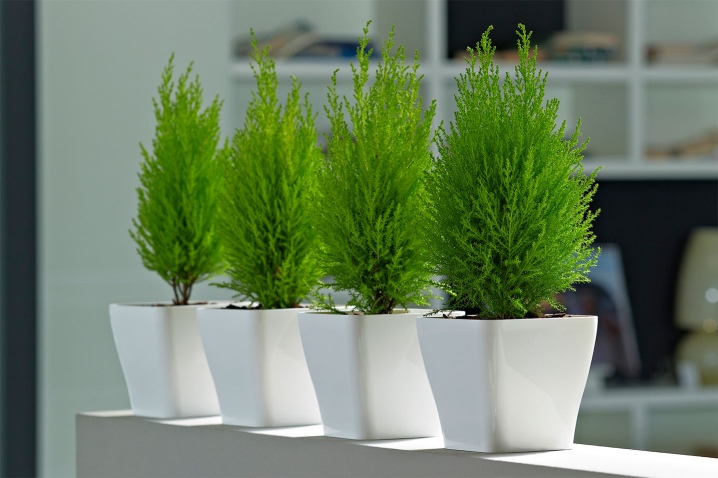
Species overview
Thuja belongs to the type of Asian cultures. There are such main types of it:
- Chinese, Korean;

- Japanese;

- western and eastern.
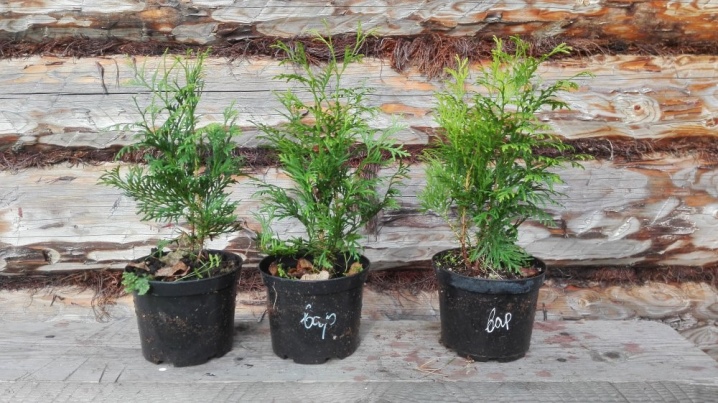
Chinese and Korean thuja most often grow in their homeland. Their needles are very soft and spreading. Branches can be silvery or dark green in color. The length of the leaves reaches 18-20 mm, and the cones grow up to 8-10 mm. The shape of the leaves resembles a triangle.
In our country, Chinese and Korean thuja are planted mainly for greening cities in warm southern regions, or they are grown in apartments and houses at freezing temperatures. The hardy Japanese thuja can grow up to 2 meters in height. Its needles are beautiful and soft to the touch. In Russia, it has taken root well, because it is able to do without wet soil for a long time and firmly tolerates small frosts if it remains on the balcony at low air temperatures. Folded thuja grows in the form of a shrub, reaching 1.5-2 meters in height. It is very unpretentious in content. The western variety of this plant looks both in the form of an ornamental tree up to two meters high, and in the form of a shrub up to 1.5 meters. The needles of the plant are scaly, and the bush is not spreading, its branches hang down.
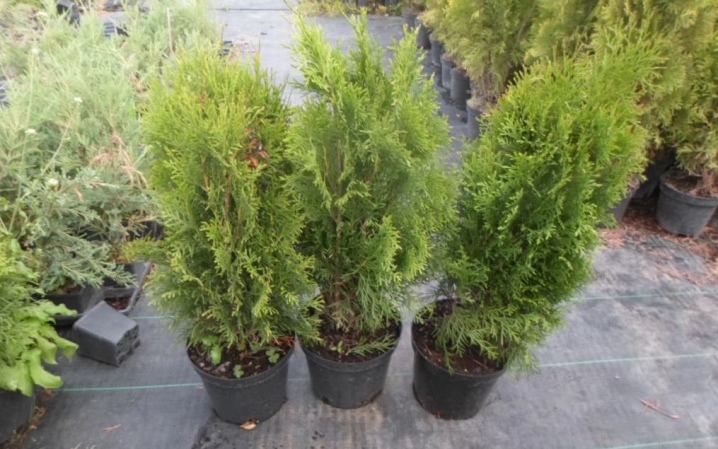
Eastern thuja differs from others in that it can be grown not only in tubs, but also in small pots at home. Scientists managed to get a wide variety of decorative dwarf species, differing in color and size of leaves, as well as the height of the plant itself.Thuja leaves are blue, green, golden and have a silvery tint. The most popular plants for planting in a pot are varieties:
- "Folded Vipcord";
- "Eastern Aurea Nana";
- "Miriam";
- "Eastern biota" and others.
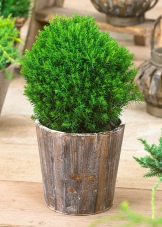
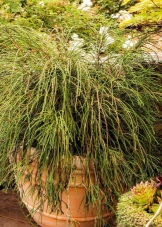

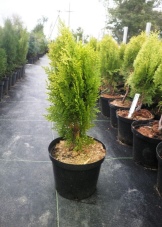
The main feature of the eastern type of thuja is its slow growth. Indoor thuja blooms during May. When ripe, its cones have a green-blue tone, and already in April, in the second year of the tree's life, they acquire a reddish-brown hue. Cone seeds are similar to wheat grains. As a greenhouse, balcony or room landing options are used:
- cone-shaped (heather-shaped), spherical thuja;
- pyramidal plant;
- a tree in the shape of a weeping willow.
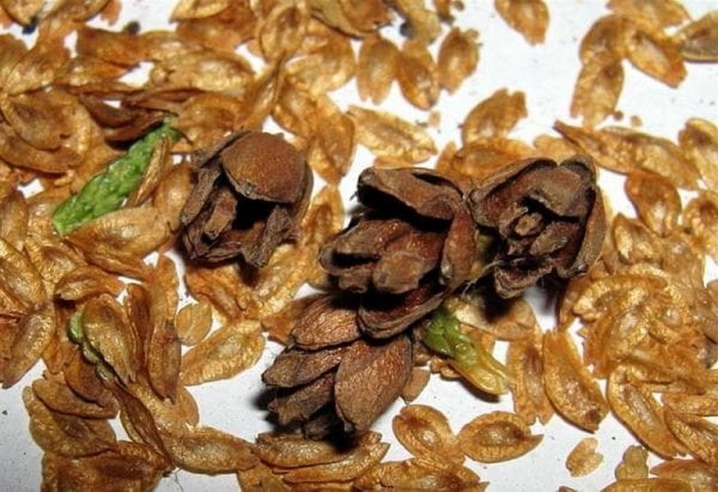
A miniature cone-shaped tree grows rather slowly and grows up to 1.5-2.5 meters. Its crown is like an egg. Coniferous needles are short, green and blue in color in summer, and bronze in winter. The most famous varieties of this thuja are Golden Tuffet, Mr. Bowling Ball, Filiformis, Teddy.
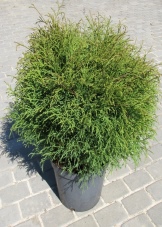
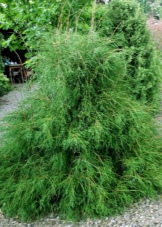
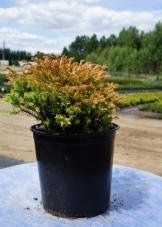
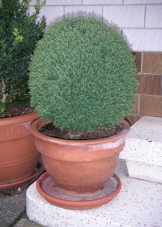
Globular thuja is a shrub plant that is dwarf. Thuja grows slowly, up to a maximum height of 1-1.5 meters. The crown is round, thick, resembling a ball or egg. With the change of seasons, the color of its needles also changes. In summer, the bushes are dark green, and in winter their color is painted in a bronze tone. Popular samples are considered "Danica", "Globoza", "Hozeri", "Stolvik", "Little Champion" and other varieties.


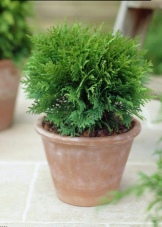
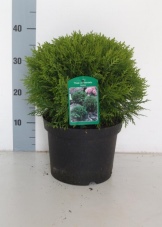
Thuja in the form of a pyramid grows no more than 1-2 meters up during the entire period of life. The shrub grows slowly. The color of the needles is predominantly golden at a young age, but acquires a green tone as the plant matures.
The Weeping Willow variety is characterized by bent branches and a disproportionate crown. Its color in summer is bright with blueness, and with the approach of cold weather the needles become duller. Thuja grows up to 1-1.5 meters. Its top is flattened, reminiscent of a dome. Popular are the varieties "Pendula", "Umbrakulifera" and other thuja shrubs.

Landing features
Depending on which variety of thuja you purchased, you will need to take into account the size of the container in which you are going to plant the plant. At home, you can plant thuja in the ground in tubs or pots. The most important point is the selection of land. You can buy the substrate in flower shops or prepare it yourself. To do this, you should take sand, coniferous soil and leafy soil in a ratio of 1: 2: 4. The tub, flowerpot or pot should have holes in the bottom for water to drain. To grow a thuja tree or shrub in an apartment, you should initially purchase a container. Not every container is suitable for growing on the balcony. You should not purchase tubs made of ceramics or plastic, as well as metal. When the outside temperature drops, they will noticeably cool down, the thuja in them will begin to freeze.
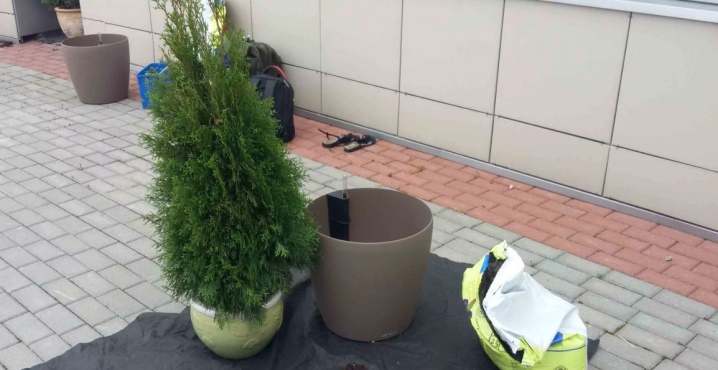
Planting a plant at home will not be difficult. Drainage should be poured onto the bottom of the tub or pot, and then the container should be 2/3 filled with soil. Place the thuja inside, holding it with one hand, and with the other pour the remaining substrate into the container, lightly tamping it around the plant. The soil should not reach the edge of the tub or pot. After planting, you need to water the bush.
Care rules
For successful growth in an apartment of a thuja planted with your own hands, you need to properly care for it. Any decorative indoor thuja is very fond of sunlight, but does not tolerate its scorching rays. It is recommended to put a tub with it on the north or west side of the apartment. It is not recommended to keep the thuja on the balcony in the open sun. If you have more than one balcony in your apartment, then in the summer, place the plant on the one that does not face the south side.
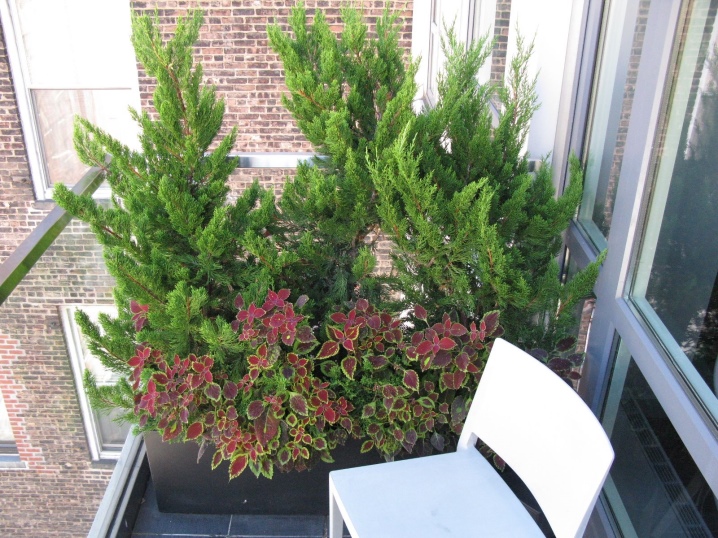
In the winter season, it is best to keep the thuja on a glazed balcony or in a room where the air temperature does not exceed +15 degrees Celsius.In summer, the temperature regime is favorable for her from +20 to +30 degrees. Thuja does not react strongly to air humidity in the room, however, in the summer heat, it is best to spray it with water. Water the bush regularly so it will grow lush. Choose the time interval between watering yourself, the main thing is that the soil is not dry, it is also not recommended to water the plant too often.
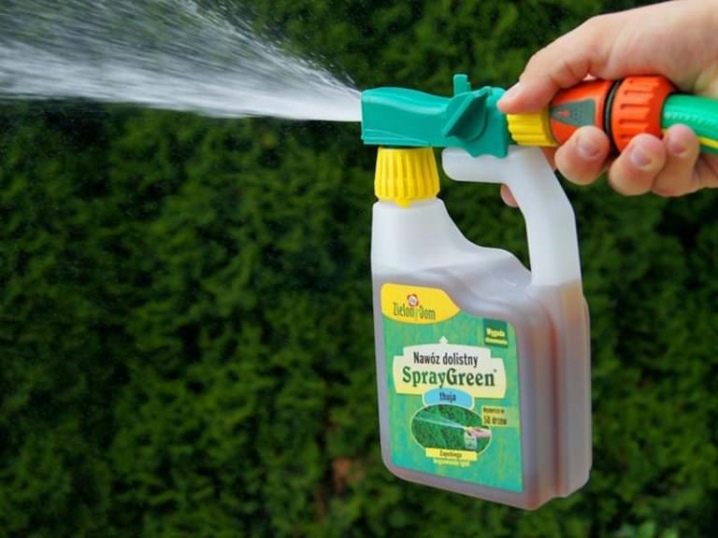
During the spring and summer months, the plant can be fed with fertilizers. In the spring, it is better to do it with nitrogen-containing substances, and in the summer, use potash and sometimes phosphorus compounds. Thuja does not like drafts and wind, so do not leave the plant indoors with sudden changes in temperature. If your tree has grown, then replant it in a larger pot no more than once a year. It is necessary to remove the thuja from the previous container directly with the soil and plant it with it in a new container so as not to damage the roots.
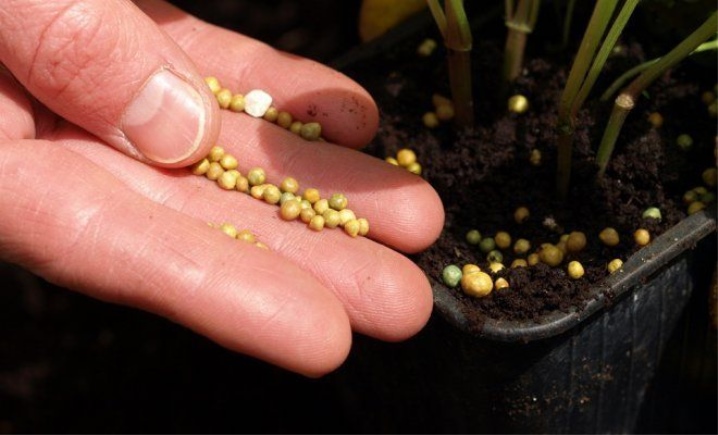
Only dried branches should be pruned, but you can cut the thuja as the needles grow. Thus, give the plant any shape you like.
Reproduction methods
At home, thuja can be propagated in two ways - this is cuttings and propagation by seeds. The seeds of an adult plant are in the cones. You need to cut a few pieces from the branches and put them in a warm, preferably dark place. After a while, the buds will begin to dry out and open, and beneath them will be seeds that you can extract without much effort. Thuja can be propagated by seeds according to the scheme.
- Seeds must be wrapped in a wet cloth and left in a warm place for 24 hours. The cloth should be moistened periodically.
- During this time, it is necessary to prepare a tub with drainage at the bottom. A substrate is placed in it and covered with a layer of soil.
- After a day, the swollen seeds are dipped into the tub, one per hole, and watered. It is not necessary to deepen them, and after immersion it is necessary to cover them with sawdust on top.
- Seedlings will appear no earlier than 30 days after planting, and it will be possible to grow a thuja tree or bush only after 3-5 years.
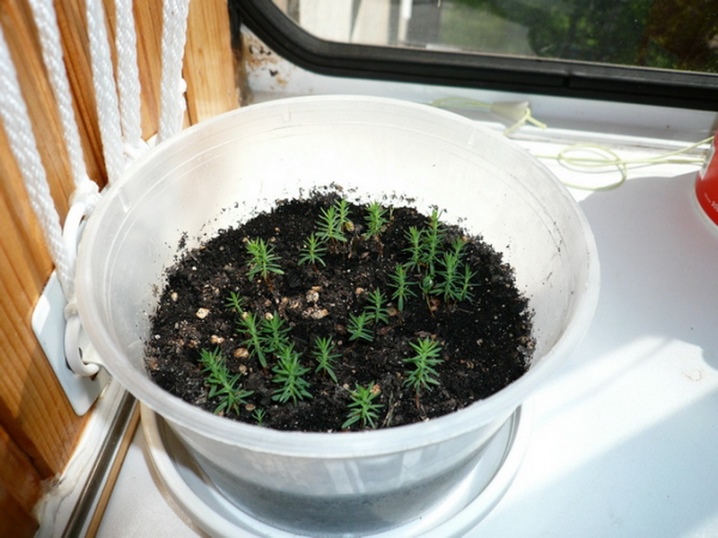
The seed propagation method is rarely used due to its duration. Most often, thuja is propagated at home using cuttings. A full bush can be grown in this way much faster than using the previous method.
The spring months are chosen for this procedure.
- It is best to cut 100-120 mm long cuttings from the side branches rather than from the top. They are more durable and root better.
- Cut cuttings should be cut obliquely in the base area, and the bark next to the cut should be pry off with a knife and removed.
- After that, to a height of 80-100 mm above the cut level, it is necessary to make transverse cuts in the bark with a knife and remove all the needles, leaving a little of it on the cutting tops.
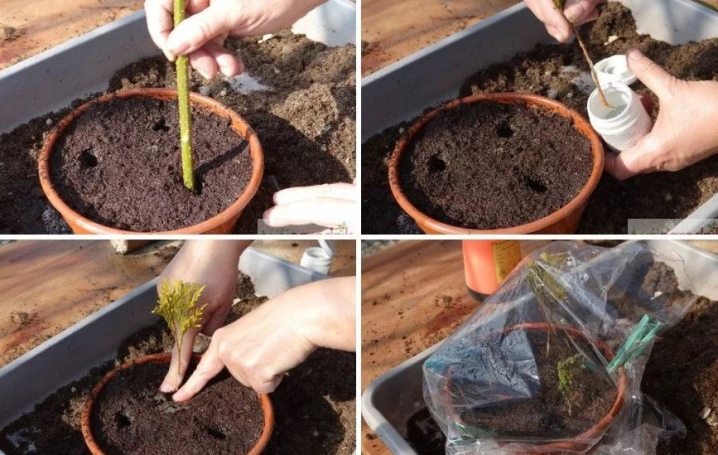
These cuts will further help the young roots germinate without overcoming the difficult tree bark obstacle. The cuttings should be placed in a growth stimulating solution for 24 hours. A day before disembarkation, you need to prepare a container for them and the soil. Usually they take small containers, and peat mixed with washed sand is used as a substrate. To remove the larvae of harmful insects from the sand, it can be ignited in the oven or spilled abundantly with boiling water. Cuttings are planted in the ground at an angle of 45 degrees. Planted seedlings should be kept warm and watered daily. Over the summer, the cuttings acquire young roots, in the presence of which the thuja is ready for transplantation into tubs or pots.
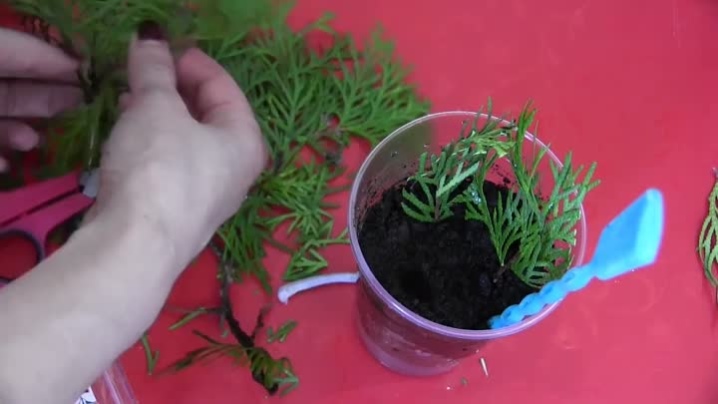
Diseases and pests
Thuja is susceptible to disease.
- Phytophthora and brown mold - these are diseases, under the influence of which the leaves dry, the root rot. The plant quickly loses its appearance. If you do not take appropriate measures to eliminate the disease, you will soon see that the thuja has simply dried up. It can be revived by spraying with solutions of "Fungicide" or Fundazol ".
- False shield. The bark of a tree or bush is covered with brown spots.Get rid of the disease with the help of drugs "Rogorom" and "Actellik".
- With rust, all the needles turn black and fall off. Plants can be reanimated with the help of Topsin-M and Hom preparations. All damaged branches must be cut and burned.
- Very often, young shoots of thuja attack aphids, speckled moths, stem and root scale insects, as well as leaf rollers. Rooting on young branches, these pests actively suck up the juice, thereby taking away the vitality of the plant. It becomes stunted, the needles crumble, the branches rot. To combat pests, thuyu is abundantly treated with "Fungicide" and "Fufanon".
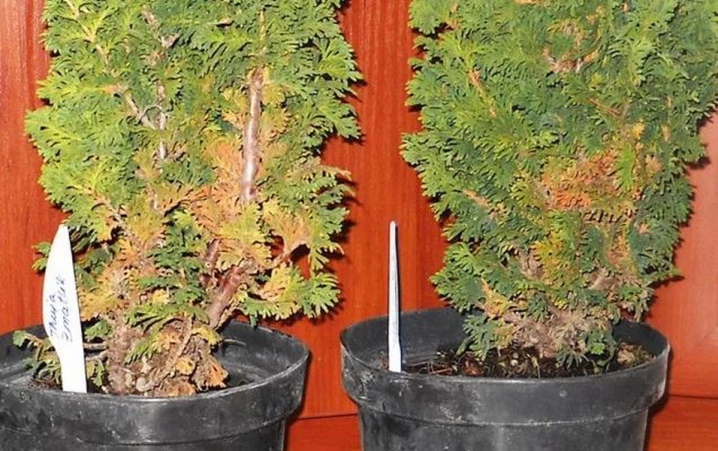
For information on how to plant a thuja in a pot, see the next video.



































































The comment was sent successfully.